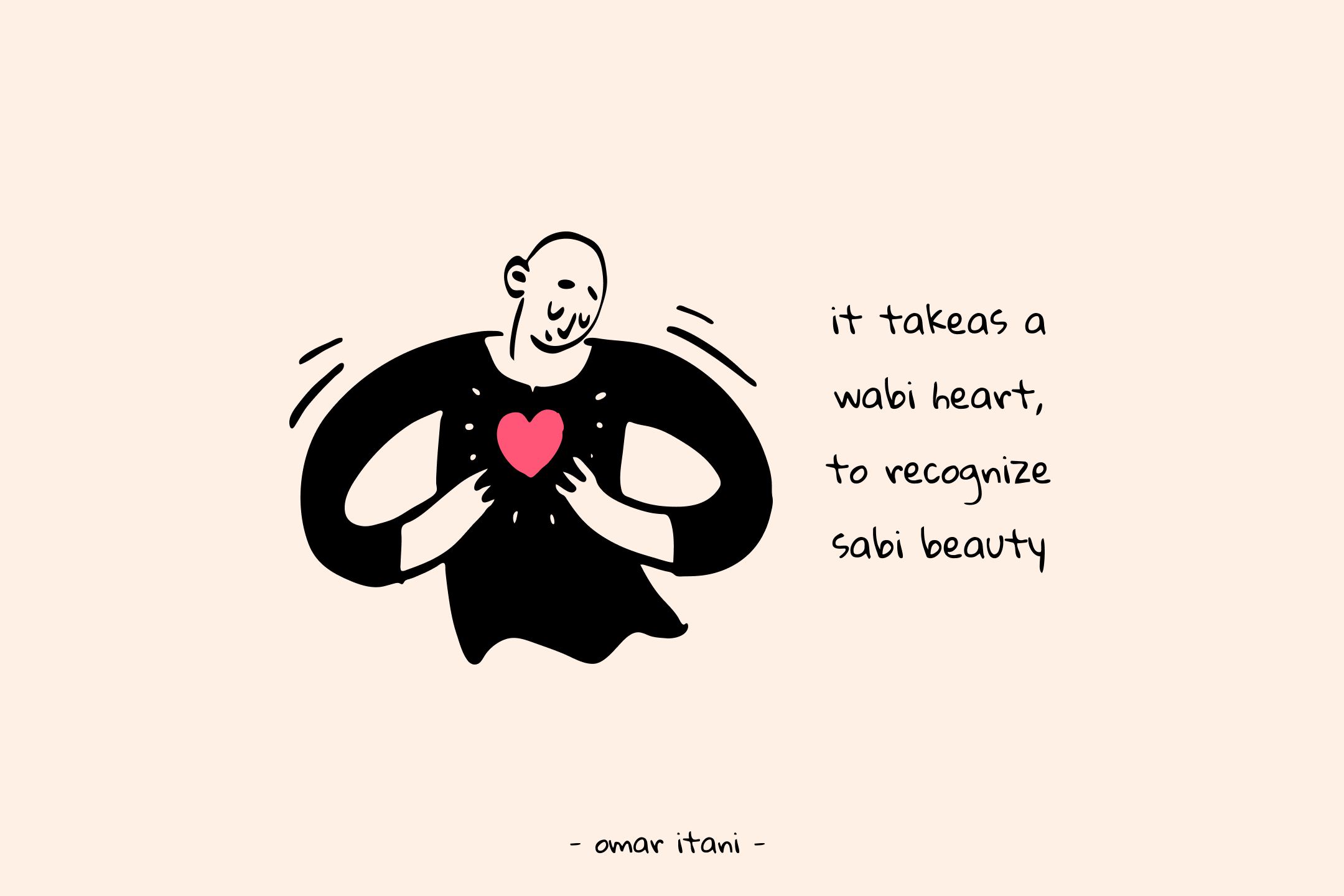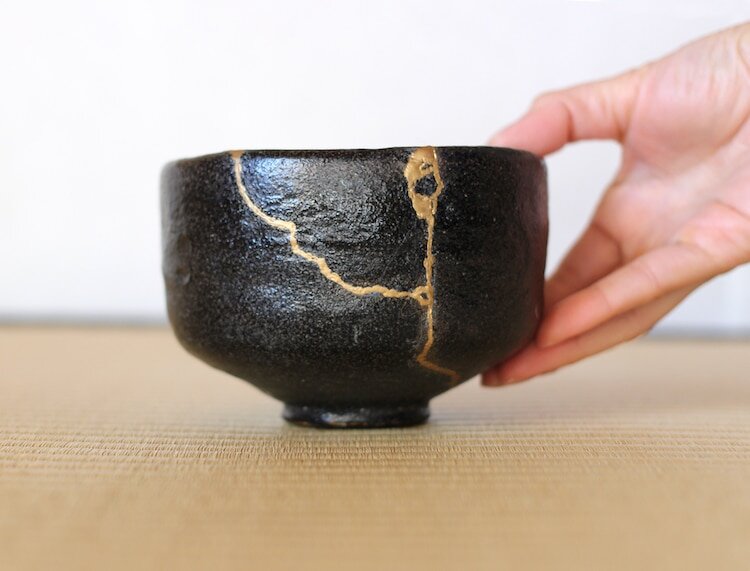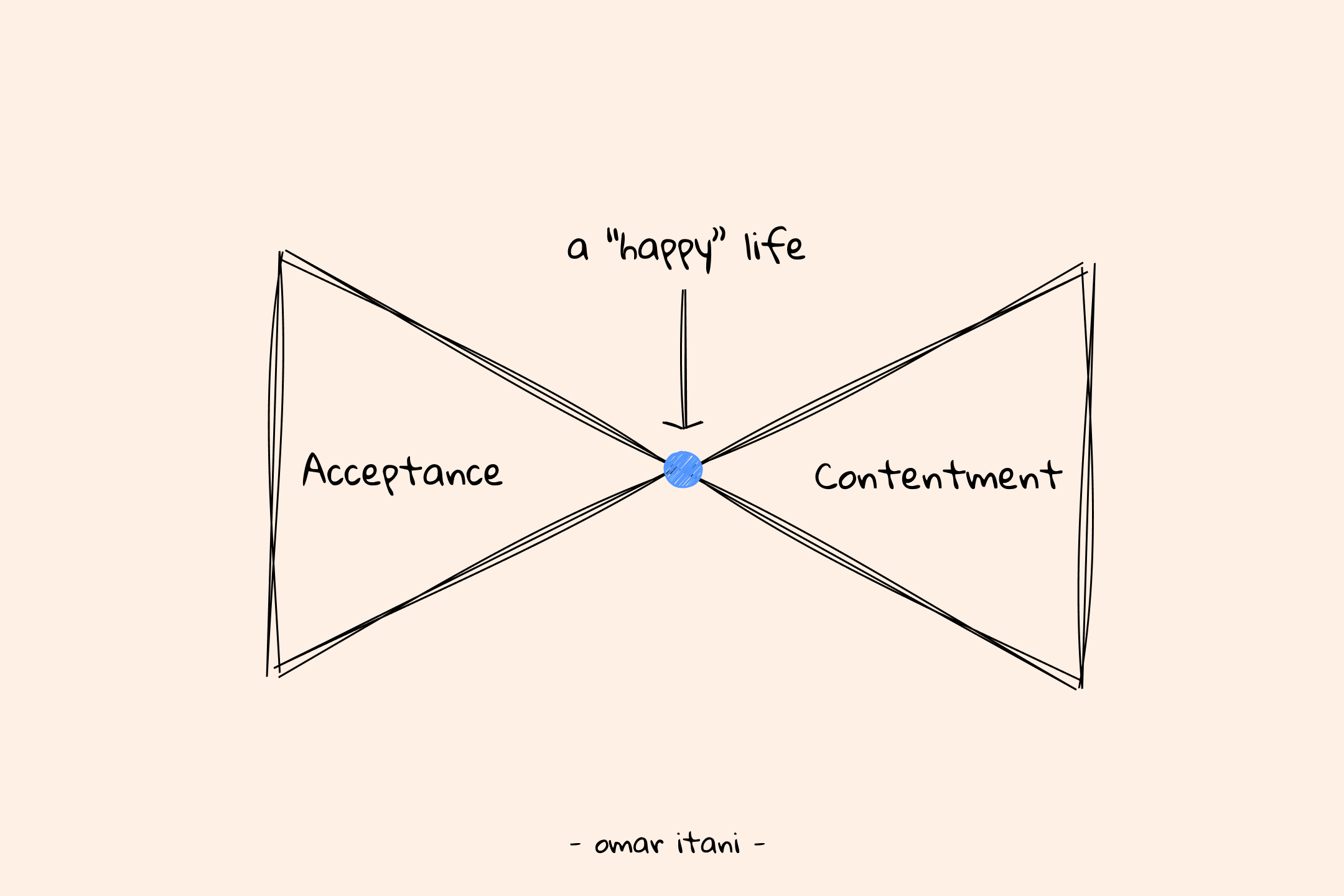5 Teachings From The Japanese Wabi Sabi Philosophy That Can Drastically Improve Your Life
In a world that is riddled with high-stress levels, fast-paced living, unrealistic pursuits of perfection, and a damaging affliction with materialistic wealth, there’s an ancient Japanese way of life that can be just what we need right now, to save us from our total demise.
Wabi-sabi is an elegant philosophy that denotes a more connected way of living—a lifestyle, where we are deeply connected to nature, and thus, better connected to our truest inner-selves.
Wabi-sabi is a concept that motions us to constantly search for the beauty in imperfection and accept the more natural cycle of life. It reminds us that all things including us and life itself, are impermanent, incomplete, and imperfect. Perfection, then, is impossible and impermanence is the only way.
Taken individually, wabi and sabi are two separate concepts:
Wabi is about recognizing beauty in humble simplicity. It invites us to open our heart and detach from the vanity of materialism so we can experience spiritual richness instead.
Sabi is concerned with the passage of time, the way all things grow, age, and decay, and how it manifests itself beautifully in objects. It suggests that beauty is hidden beneath the surface of what we actually see, even in what we initially perceive as broken.
Together, these two concepts create an overarching philosophy for approaching life: Accept what is, stay in the present moment, and appreciate the simple, transient stages of life.
There’s a plethora of wisdom embedded within the very fabric of this age-old philosophy. Here are five of these Wabi-sabi teachings that can better help you to fully step away from the modern-day struggles of moving fast, striving for perfection, and chasing inorganic forms of success.
Personally, I’m fascinated by the principles of wabi-sabi, for they’ve really helped me garden more poise and grace in my everyday life.
1. Through acceptance, you find freedom; out of acceptance, you find growth.
The Dewa Sanzan is a little-known mountain range in northern Japan. Since the 8th century, it has been the sacred pilgrimage site for the Yamabushi monks who partake in yearly rituals seeking rebirth and enlightenment for their mind, body, and soul. The core philosophy of their training can be summed in one word, Uketamo, which means "I humbly accept with an open heart."
Here’s how it works:
You’re about to lose your job? Uketamo.
The forecast suddenly changed to downpour rain and now you must cancel your outdoor event? Uketamo.
You had a very silly accident and now you’ve fractured your left leg and are due to be in a cast for the next month? Uketamo.
Uketamo means acceptance to the core. The Yamabushi understood that the sooner you can accept all the good and bad things life throws at you, the lighter you will feel. They fathomed that we find our freedom through acceptance, and out of acceptance, we find our path to growth.
What freedom? The freedom to stop all forms of suffering.
What growth? The opportunity to learn and expand from our own struggles.
You see, we tend to assume that Zen is about living in an endless worry-free state of bliss and tranquillity. Here’s a reality check: it’s not.
Zen is about how you face the challenges and difficulties life throws at you. It’s about how you deal with the inevitable realities of failure, grief, worry, and loneliness. Zen is in your response. Will you accept the imperfect flow of life? Or will you fight it? Will you find peace in what is right here, right now? Or will you deny it and thus continue your struggle with it?
The idea is quite simple: As you continue to resist, so will you continue to compound your suffering.
The first teaching of the wabi-sabi philosophy, then, is to practice gratitude and acceptance. It’s not about giving up. It’s about surrendering to the gravity of the situation at hand and then actively playing a role in deciding what happens next.
Uketamo reminds me of what the Stoics called Amor Fati, a love of fate. And Wabi-sabi preaches the same: You will find peace and freedom, and you will step onto the path of growth, once you begin yielding and surrendering to the imperfect flow of life.
2. All things in life, including you, are in an imperfect state of flux, so strive not for perfection, but for excellence instead.
If everything in nature is always changing, then nothing can ever be absolutely complete. And since perfection is a state of completeness, then nothing can ever be perfect. Hence, the wabi-sabi philosophy teaches us that all things, including us and life itself, are impermanent, incomplete, and imperfect.
The problem, however, is that our flawed ways of thinking have now blurred our understanding of what perfection really is.
Open up a thesaurus and search for the antonyms for "perfect" and you’ll find the following words: Flawed, corrupt, inferior, poor, second-rate, inept, broken, wrong, bad… My goodness. All this negativity. No wonder we’ve become so obsessed with seeking perfection.
We sculpt the perfect body, based on what society deems it must look like to pass that test of perfection. We seek the perfect career path and the perfect partner based on someone else’s definition of that perfection. And as creators, we procrastinate until eternity before ever releasing that imperfect piece of art.
In 2020, the global anti-ageing market was estimated to be worth about $60 billion U.S. dollars. People are desperate to look younger. But isn’t growing old the natural cycle of life? Isn’t ageing with the passage of time a thing of beauty?
All of this is happening because we’ve been fed this false narrative that we’re not good enough. And we’ve accepted this opinion that’s not even our own. We’ve allowed it to define us. And now we chase that illusion of perfection thinking it will make us feel worthy and good enough inside ourselves.
But here’s the reality check: Perfection does not exist because imperfection is the natural state of life—you are whole, the entirety of you, as you are.
In order to eliminate this negative stigma around imperfection, we first need to completely reject it as being “the opposite” of that fictional construct that is perfection. We need to write a new narrative that reads: Imperfection is not a compromise; imperfection is the only way because imperfection is the true nature of things.
The second teaching of the wabi-sabi philosophy is simple: Strive not for perfection, but for excellence instead.
In other words, simply do your best to be the best that you can be.
This aligns with one of Don Miguel Ruiz’s four agreement for achieving personal freedom. In your relationship with your partner, try to be the best partner you can be. In your creative work, seek mastery. Work to improve the form of your craft without ever expecting to attain absolute perfection.
All things in life, including you, are in an imperfect state of flux. Change is the only constant. Everything is transient and nothing is ever complete. And that’s why perfection doesn’t exist.
3. Appreciate the beauty of all things, especially the great beauty that hides beneath the surface of what seems to be broken.
An ancient form of art stems from wabi-sabi, whereby you mend broken objects with gold fillings, giving them “golden scars.” It’s known as Kintsugi.
Think of a bowl or teapot that has been dropped onto the floor. What would you do with it? You’d most probably pick up the pieces and throw them away. But not with Kintsugi. Here, you bring the pieces of broken pottery back together and glue them with liquid gold. Wouldn’t that make them imperfect, permanently and inevitably flawed, but somehow, more beautiful?
Kintsugi reminds us that there is great beauty in broken things because scars tell a story. They demonstrate fortitude, wisdom, and resilience, earned through the passage of time. Why hide these imperfections or golden scars when we are meant to celebrate them?
The idea here is simple: There will be many times in your life when you will feel broken. There will be events that will leave you with emotional or physical scars. Do not hide in the shadow of your own sunshine. Do not dim your own light with the darkness of a cloud. Instead, let those scars be redrawn with gold.
Consider that your failures are there to teach you how not to do things, your mistakes are there to teach you the importance of forgiveness, and your wrinkles are there to remind you of your laughs that caused them.
Start to embrace this concept of Kintsugi—that broken objects are not to be hidden, they are to be displayed with pride—and you’ll slowly begin to realize how you’re dissolving that image of perfection, and replacing it with a new divine concept of beauty: The entirety of you.
4. Slow and simple, is the only way, to feel the joy of what it means to be alive.
You might be wondering, but how can you see the beauty beneath the surface? How do you manage to find beauty in everyday life when everything seems so dark and grim?
The answer to those questions lies in the philosophy’s fourth teaching: Slow down and simplify your life. Otherwise, you’ll rush through it, arrive at the end and wonder, “what was the point?” This teaching is quite simple, but its immediate and long-term implications are profound.
Here’s why:
Slowing down is the antidote to living in a rhythm of rush. Slowing down is what helps you become a more observant person. Which then helps you become more self-aware. Why? Because as soon as you slow down, you begin creating the space for you to pause and reflect, to wonder and ask questions. You naturally become more present. Why do you think most people hit rock bottom or total burnout before it finally dawns on them that their way of life is not sustainable? It’s because they were moving too fast and never slowed down to carve out the mental and emotional space for them to observe and analyze their self-sabotaging behaviour.
Simplifying your life is the antidote to living a complex one. At any point in time, as soon as you seek to change something in your life, you will, time and again, realize that the first step is not to ask, “what do I need to add,” but “what do I need to remove?” When you’re about to move into a new home, you throw out some old stuff. When you’re budgeting, you stip away the needless expenses. When you’re entering a new relationship, you wonder, what are some habits that I need to let go, so that I can make way for this person into my life. Decluttering is an integral part of the journey to growth and change. Letting of what no longer serves you is how you allow room for what will.
Slow and simple is the only way to feel the joy of what it means to be alive. Why? Because only by doing so will you allow yourself to become more present and in tune with the world around you. Only by doing so will you immerse yourself into the fabric of this universe and appreciate it for what it is: The joy of watering your flowers in the morning, the joy of watching a sinking sun, the joy listening to soft rain, the joy baking of a cake or reading a book under the share of a tree.
Beauty is found in everything that is alive.
And that’s the essence of the fourth teaching: Slow down, simplify your life, and concentrate on what really matters to you. Become more intentional if you wish to experience the joy of everyday living.
5. To be content exactly where you are with all that you already have, is to be happy.
Modern-day society is obsessed with finding happiness. Honestly, I was a victim of this myself. I spent a significant portion of my young adult life pursuing the next big thing: The next big job, the next big startup, the next big move to a new country. And every time I overworked myself to arrive at where I thought I wanted to be, this wave of emptiness washed over me.
This wave of hopelessness is what Harvard positive psychology, Tal Ben-Shahar, coined as the arrival fallacy, “the illusion that once we make it, once we attain our goal or reach our destination, we will reach lasting happiness.” But of course, that’s not the case, because compulsive goal-setting does not lead to happiness, it leads to a mindless and stressful game of fetch.
The truth is, our obsession with seeking happiness has blinded us to what happiness actually is: An emotion.
It’s just another emotion.
We feel happy and unhappy just as how we feel angry, sad, scared, or excited. You can’t be happy all the time just as how you can’t be excited all the time.
So what’s the problem with chasing happiness? First, it will always evade you. And second, it’s virtually impossible to be happy all the time.
This is where the final wabi-sabi teaching comes in.
On a 17th-century tsukubai (water basin) stone at the Ryoanji Temple in Kyoto, there’s an ancient inscription where four Chinese characters are written on the stone. Read alone, these characters are of no significance. But when combined with the borders of the central square, they can be read as "ware tada taru wo shiru,” which means “I only know plenty,” or “I only know contentment.”
I only know contentment.
Isn’t that so powerful?
To be content with the emotion of anger just as how you are usually content with the emotion of excitement. To be content with the state of sadness just as how you are incredibly content with the state of happiness.
But how about a more poetic translation to that inscription?
How about, “rich is the person who is content with who he is or what he has.” Or, how about this: “What I have is all I need.”
You see, the root of all unhappiness is born from being discontent with where you are and what you have. It really is as simple as that.
The root of all unhappiness is born from spending all your waking hours casting your gaze out into the distant future and looking outside your life, instead of opening your eyes to the present and looking inside it.
To be content with what you have and where you are is to be grateful. To be content with what you have and where you are, while working toward what you want, and fully trusting that you can achieve it, is to be intentional. And through gratitude, intention, and action, you find happiness.
But the beauty of it all? It circles back to the first wabi-sabi teaching: Acceptance is contentment and contentment is acceptance.
The Core Teaching of The Wabi-Sabi Philosophy
Wabi-sabi is a beautiful philosophy to embed and practice in your everyday life. The seven principles of optimism are well-anchored in it.
But at its core, wabi-sabi reminds you that life is fragile and temporary, it is as impermanent as anything else in nature, so why not give yourself permission to be just that, yourself?
As Beth Kempton wrote in her book, Wabi Sabi, a Japanese Wisdom for a Perfect Imperfect Life:
“Put simply, wabi sabi gives you permission to be yourself. It encourages you to do your best but not make yourself ill in pursuit of an unattainable goal of perfection. It gently motions you to relax, slow down and enjoy your life. And it shows you that beauty can be found in the most unlikely of places, making every day a doorway to delight.”



